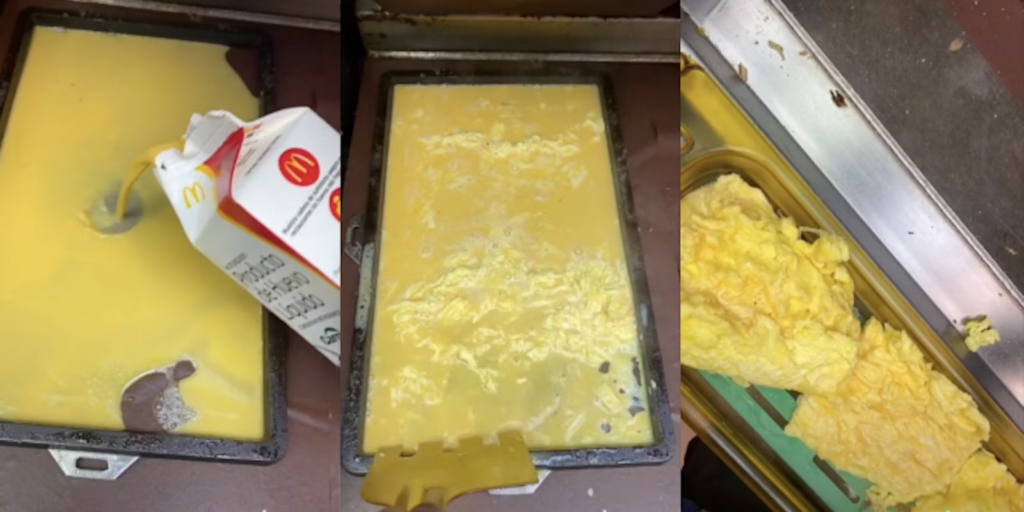Unveiling the Preparation of McDonald’s Scrambled Eggs
McDonald’s, a global leader in the fast-food industry, has long been known for its diverse breakfast offerings. Among these, scrambled eggs hold a special place, often accompanying various breakfast sandwiches and platters. Recently, insights into the preparation methods of McDonald’s scrambled eggs have surfaced, shedding light on the processes behind this popular menu item.
The Preparation Process
At McDonald’s, the preparation of scrambled eggs involves the use of liquid eggs, which are a blend of whole eggs and other ingredients to maintain consistency and shelf life. This mixture is stored in cartons and used as needed during breakfast service.

When an order is placed, the cooking process begins by heating a grill or griddle to the appropriate temperature. A small amount of butter or margarine is applied to the surface to prevent sticking and to add flavor. The liquid egg mixture is then poured onto the heated surface. Using spatulas, the crew members gently stir the eggs as they cook, ensuring even heat distribution and preventing overcooking. This method results in scrambled eggs that are uniform in texture and taste.
Consistency and Efficiency
The use of liquid eggs allows McDonald’s to maintain a high level of consistency across its numerous locations. This standardized approach ensures that customers receive the same quality of scrambled eggs, regardless of which restaurant they visit. Additionally, this method streamlines the cooking process, allowing for quick preparation during peak breakfast hours.
Nutritional Information
According to McDonald’s official nutritional information, their scrambled eggs contain eggs and citric acid, with clarified butter used during the cooking process. This straightforward ingredient list provides customers with transparency regarding what is in their food.
Customer Perceptions
The revelation of McDonald’s scrambled egg preparation methods has elicited a range of reactions from customers. Some patrons appreciate the efficiency and consistency of the process, recognizing the challenges of serving a high volume of customers quickly. Others express surprise, having assumed that the eggs were freshly cracked and cooked to order.

Comparisons to Homemade Preparation
For those interested in replicating the McDonald’s scrambled egg experience at home, several copycat recipes are available. These typically involve whisking eggs with a small amount of cream or milk to achieve a creamy texture, cooking them slowly over medium-low heat, and stirring gently to create soft curds. While the exact taste may vary, these methods aim to mimic the texture and flavor profile of McDonald’s scrambled eggs.
Conclusion
Understanding the preparation process of McDonald’s scrambled eggs offers insight into the balance the company strikes between efficiency, consistency, and customer satisfaction. While the use of liquid eggs and standardized cooking methods may differ from traditional home preparation, they enable McDonald’s to deliver a reliable breakfast experience to millions of customers daily.

















